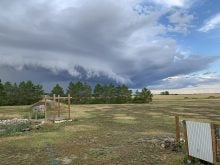Like most observers of the farm sector, Greg Stewart hears tales of woe, fears about the future and worries about low incomes and eroding assets.
But when he goes about his work as senior vice-president of national lending operations at Farm Credit Canada, that is not the picture of agriculture he sees.
“Things are better than you often hear,” Stewart said. “I see a lot of strength in agriculture, a lot of optimism.”
It is, he said, reflected in FCC’s record-breaking year in 2002-03, when assets, income, loans approved and portfolio hit all-time high levels.
Read Also

Message to provincial agriculture ministers: focus on international trade
International trade stakeholders said securing markets in the face of increasing protectionism should be the key priority for Canada’s agriculture ministers.
More than 24,000 loans worth more than $3.1 billion were approved during the fiscal year ended March 31, 2003.
Retained earnings increased 40 percent to $96.8 million. The value of FCC loans outstanding increased 14 percent to $8.8 billion.
It was the 10th consecutive year of growth in the FCC portfolio and its share of national agricultural debt increased to 18 percent.
“We had an exceptional year and exceeded our greatest expectations,” Stewart said from the Regina head offices of the federal crown corporation.
Farmers are borrowing to expand, upgrade or buy into the business, he said.
Later this year, Statistics Canada is expected to announce that national farm debt, which hovered around $22 billion through most of the 1980s and early 1990s, has passed the $42 billion mark.
While debt servicing charges have become one of agriculture’s biggest expenses, Stewart does not see debt levels as a problem.
FCC arrears last year were $31 million, a fraction of its debt outstanding.
“As long as farmers are able to service their debt and it is being used to make their operations more efficient, then I don’t see it as a problem, particularly with interest rates at their low levels,” said Stewart.
“Our arrears level would suggest that farmers are not taking on more debt than they can handle.”
It also is reflected in the sharp drop in FCC land holdings.
In the late 1980s, FCC owned almost one million acres of land forfeited by bankrupt farmers, making it the largest agricultural landholder in the country.
By 1999, the total still exceeded 600,000 acres worth more than $103 million. By March 31, 2003, land holdings were just 5,109 acres worth $3.5 million.
Stewart said the market’s strength and loan demand last year surprised FCC managers, who had budgeted for $2.5 billion in new loan approvals and ended up with $3.1 billion.
It was a year when drought affected large parts of Alberta and Saskatchewan.
This year, it is budgeting for another $2.8 billion in new loans.














